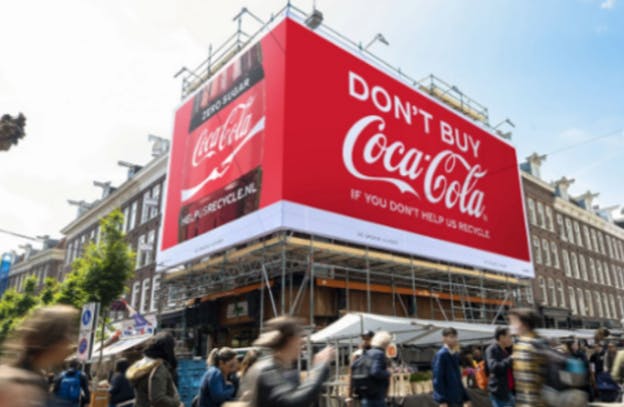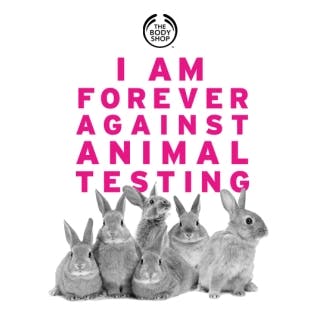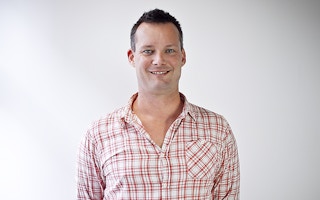Ben Peacock had the idea to launch an advertising agency that specialises in sustainability with his brother-in-law while they were working together in Bangkok as creatives on the Unilever account in the mid-2000s.
To continue reading, subscribe to Eco‑Business.
There's something for everyone. We offer a range of subscription plans.
- Access our stories and receive our Insights Weekly newsletter with the free EB Member plan.
- Unlock unlimited access to our content and archive with EB Circle.
- Publish your content with EB Premium.
But before they could hatch their plan, Peacock was diagnosed with testicular cancer and his brother-in-law, Julian Horton, was killed in a car accident.
“The death of a loved one and a near-death experience focuses the mind on what you really believe you should be doing with your life,” says Peacock. “I realised that if I wanted to apply the dark arts of marketing to do good in the world, I had to do it now, not later.”
After recovering from a year of chemotherapy, Peacock launched the sustainability-focused ad agency Republic of Everyone with business partner Matt Perry in 2007. In the bitterly competitive Sydney advertising scene, they found a niche at a time when sustainability was a barely-used and poorly understood concept.
“Ad agencies are full of really clever people. But all this brainpower is sat around trying to figure out the personality of a potato chip, so they can increase sales of something the world doesn’t need,” says Peacock. “It’s the most vacuous use of the most awesome skills; the power to change opinions and change behaviour.”
Peacock set out to apply his creative talent to improve the world rather than plunder it, and has built one of a few ad agencies to work only on sustainability-driven brands.
“
You need to ask yourself, is the client making a genuine attempt to remove a problem created by their business, or are they trying to paper over a problem in the hope that no one will notice it.
His agency started out working for non-government organisations (“they were the only people who wanted to work with us at the time,” he says), but 13 years later, he is working with the likes of Patagonia, Ben & Jerry’s, Absolut, Frasers Property and Autodesk.
In this interview with Eco-Business, Peacock talks about how he’s persevered in a cut-throat market, how to make sustainability interesting, and how to convince clients that working for a good cause does not come for free.
Australia’s is a brutally competitive ad agency market. Has it been hard to turn clients away that don’t match your values?
I was never a business person, and in some ways, I think that was a benefit. Because if you create a business plan for a company like ours, it probably wouldn’t make sense. We didn’t even have a P&L (profit and loss statement) for a year and a half, until we hired a financial controller!
If you’re passionate about something, you focus on doing it well — so it naturally tends to go well. There is no competition for that. We’re also a unique player. And uniqueness helps.
We’ve never had the ‘wrong’ clients come to us. Mostly, it’s sustainability teams needing communications support, so they’re naturally already enrolled in the same mission as us.
In the marketing world, most people have not been interested in sustainability until recently. The problem hasn’t been that the wrong brands have come to us, it’s that the right brands haven’t seen sustainability as an opportunity.
When you launched in 2007, there were very few agencies that focussed just on sustainability. Now every other mainstream agency seems to have a new sustainability offering. Was Republic of Everyone ahead of its time?
People have known about global warming since the early 1900s. People have talked about the importance of sustainability since the 1960s. Are we ahead of our time? God, no. People figured out that they need to be communicating sustainability a long time before us.
But as an agency, we were the third in the world — after Futerra in the United Kingdom, and BBMG in the United States. In 2009, there was a bunch of agencies that launched sustainability offerings, like Ogilvy Earth, Naked Planet, and Saatchi & Saatchi S. But they came and went. Agencies are very commercial machines. They were looking for growth. But they couldn’t extract the profit margins from sustainability to hit their targets. Now we’re seeing agencies re-emerge with sustainability arms, as they see it as a business opportunity again.
Have you noticed an increase in client requests for sustainability briefs recently?
Three years ago, we spent a year running workshops to get sustainability teams to bring their marketing colleagues along so we could get them interested in sustainability. But we wasted a year. We got nothing out of it.
But as soon as we gave up, the phone started ringing. That was two years ago, when the idea of brands with purpose took off. The momentum has picked up since. There was concern over whether Covid-19 would kill that momentum and brands would revert to promoting themselves as faster and cheaper again. But the opposite has happened. I haven’t been able to write proposals fast enough — there’s been a hockey stick-shaped rise in interest. Now, every brand wants a cause.
There’s now a greater understanding of how fragile the world is; if this virus can have this much impact, just imagine what climate change will do to the world. People have been able to extrapolate what the future will be like as the planet warms, and have had time at home to think about what the future could be like for their children.
Can you tell when a client is trying to greenwash?
It’s not as easy as it could be. It’s a bit like being a lawyer. Your job as a communicator is to take a client’s story, simplify and amplify it. Inevitably, the client is going to tell you the story they want you to hear — they’re not going to tell you the whole truth.
But to be fair, the client you’re dealing with has probably not been told that story themselves, and means well. It’s not like they’re lying to you, even though there could be another part of the business that is doing the opposite of what they’re telling you.
You need to ask yourself, is the client making a genuine attempt to remove a problem created by their business, or are they trying to paper over a problem in the hope that no one will notice it?
“
I haven’t been able to write proposals fast enough — there’s been a hockey stick-shaped rise in interest. Now, every brand wants a cause.
The good news is that clients are getting better at listening to their sustainability teams. There was a good example of a brand getting it wrong in 2008, when Coca-Cola brand Mount Franklin pledged to plant trees if consumers bought their bottled water. But consumers just asked: what about the plastic bottles? It was called out as greenwash.
But now, Coke is more careful. They’ve committed to spending millions on retrieving waste plastic and recycling it, and make bottles from 100 per cent recycled plastic. You can still argue, why don’t they use glass, and do we really need to drink sugary water? These are fair questions. But they are genuinely trying to find a solution to a big issue.
Have you ever turned a client away because it was trying to greenwash?
One organisation wanted to talk us about promoting “clean coal”. We just thought ‘no way’. Coal’s time has come and gone. That industry is slowing the shift to renewables. I don’t care if that organisation was making coal a bit cleaner, I don’t want to be associated with a destructive status quo.
But I’m fairly pragmatic with most brands. If you’re constantly pushing ‘bad’ clients out the door, you’re missing the opportunity to help them change for the better. The people who come to us are generally good humans who believe in the things we believe in. Our role is to help sustainability teams grow their influence within their organisations. We won’t change the world by not working with people.
One thing that the sustainability media struggles with is clients expecting things for free, since it’s ‘doing good’. How do you convince clients to pay for sustainability communications?
If I could change one thing in the world, it would be that paradigm — the belief that you can’t make money out of doing good, and that you can only do good after making money.
People tend to come to us with less money, because sustainability tends to have smaller budgets. Sometimes we will do things for less money, just because we believe in them, or we want to learn something new. But we can tell clients that we’ve been doing this for 13 years, and experience has value. We can also help clients manage risk, by ensuring they don’t make the mistakes made by so many other brands when communicating sustainability.
What’s your view on how to make sustainability communications more interesting?
The pinnacle of interesting is fun. I also think making sustainability communications social, bringing out people’s love for nature, or finding an innovation and technology angle really engages people. Sustainability is usually about ‘what’s in it for us?’. You’ve got to find the ‘what’s in it for me?’ angle too. The sweet spot is when both work together.
What are the best sustainability-led marketing ideas in your view?
Coke’s ‘Don’t buy Coca-Cola if you don’t help us recycle’ campaign. Coke is the world’s biggest plastic polluter (because they sell the most products in plastic bottles), so how does a brand that is the bad guy transition to being the good guy? The important thing about this campaign wasn’t just Coke telling consumers not to buy its products unless they recycled. Coke backed up the campaign by committing to use recycled plastic in its bottles and pumped money into collecting plastic trash.

Coke’s ‘Don’t buy Coca-Cola if you don’t help us recycle’ on a billboard in the Netherlands. Image: The Drum
Pepsi’s ad from 2017 featuring Kendall Jenner, who calmed the tension of a street protest by giving a can of Pepsi to a policeman. It was exactly what was needed to stop brands doing advertising like this. Pepsi was slammed for making light of the Black Lives Matter protests. If brands are going to get involved in an issue, they need to actually do something to address the problem, rather than just use it as a marketing opportunity.
Nike has long been a brand that people love to hate, because of its links to sweatshops in the 1980s. But the way they’ve integrated sustainability into their marketing since is second to none. The campaign to commemorate the 30th anniversary of “Just Do It” campaign featured American football player Colin Kaepernick, who knelt during the national anthem as a show of opposition to racial injustice (and lost his job as a result).
Nike received a lot of blowback for using Colin Kaepernick in that ad. Some people burned their Nike sneakers in protest. In response, Nike ran a campaign explaining how to burn their shoes safely, and suggested that people should donate their sneakers to people who need them instead. It was smart-assed, but brilliant. Nike doesn’t mess around on the edge of an issue. They go for it. They back themselves and are not scared of controversy.
Chipotle Mexican Grill’s ‘Back to the start’ campaign, which proposed a sustainable alternative to factory farming is memorable — and not just because of a soundtrack with Willie Nelson singing Coldplay’s The Scientist.
But I admire acts, not ads. Which is why I love Patagonia’s ‘worn wear’, an ongoing campaign that takes back customers’ worn clothes, repairs them and resells them.
Other good examples are IKEA opening a story in Sweden last year that only sells second-hand goods.

The Body Shop’s Against Animal Testing campaign
Levi’s WaterLess initiative from 2011 reduced the amount of water used in the production of jeans. The denim brand also encouraged less washing at home, use of cold water and line drying. They also kicked off a trend of putting jeans in the freezer rather than washing them, because it keeps the shape but kills the microbes.
But I think the best example of them all is The Body Shop’s Against Animal Testing positioning, which was born in 1989. Anita Roddick built a global empire on those three words and the act changed an industry.














